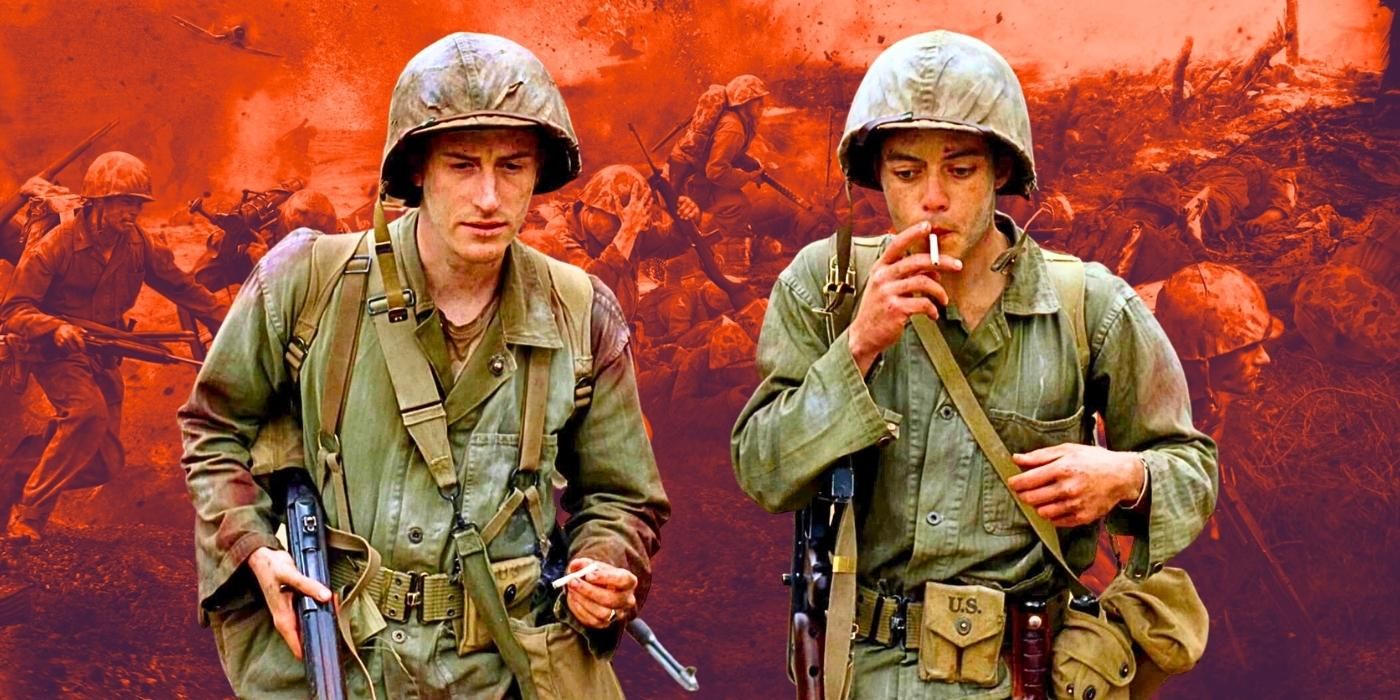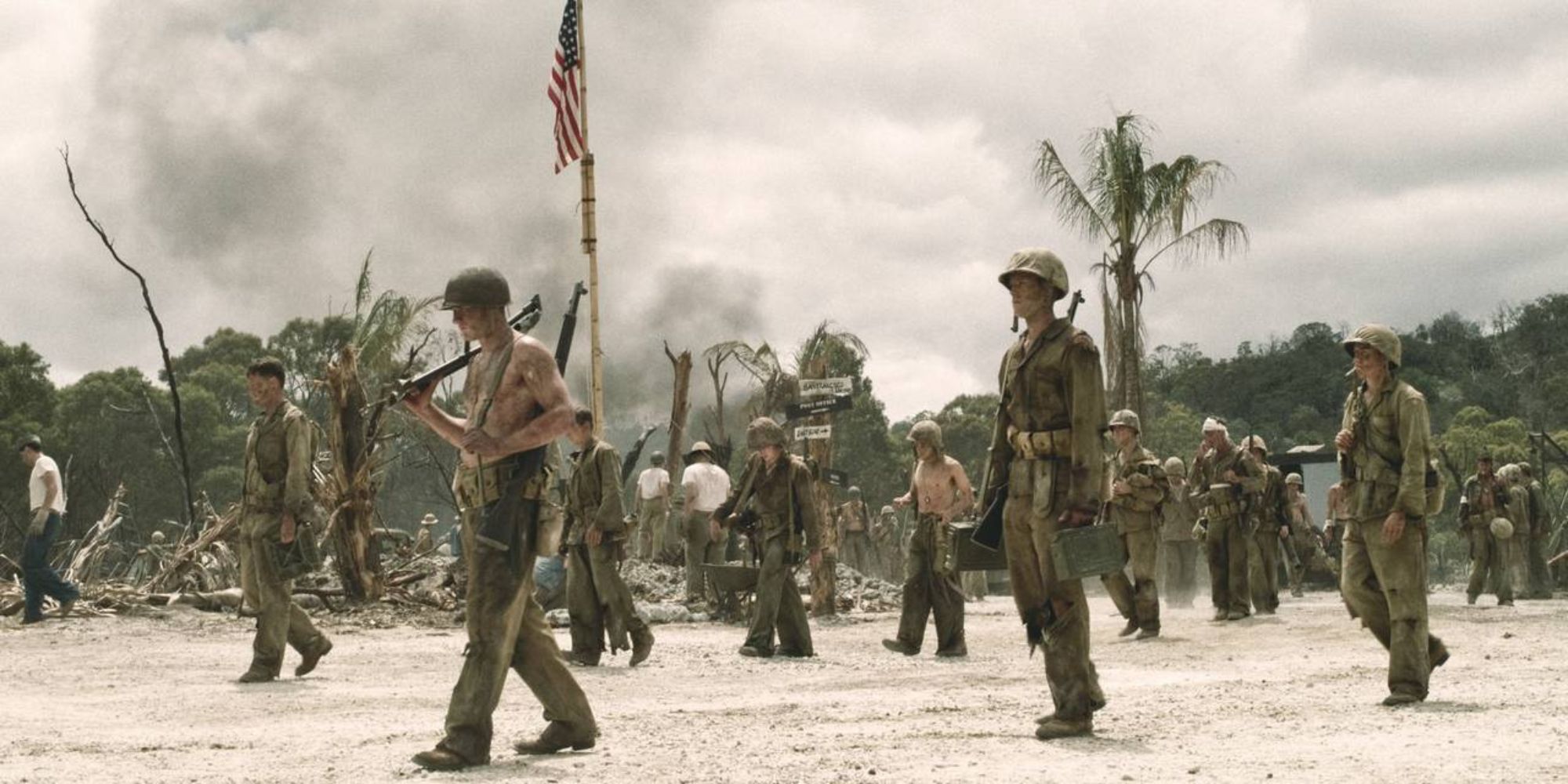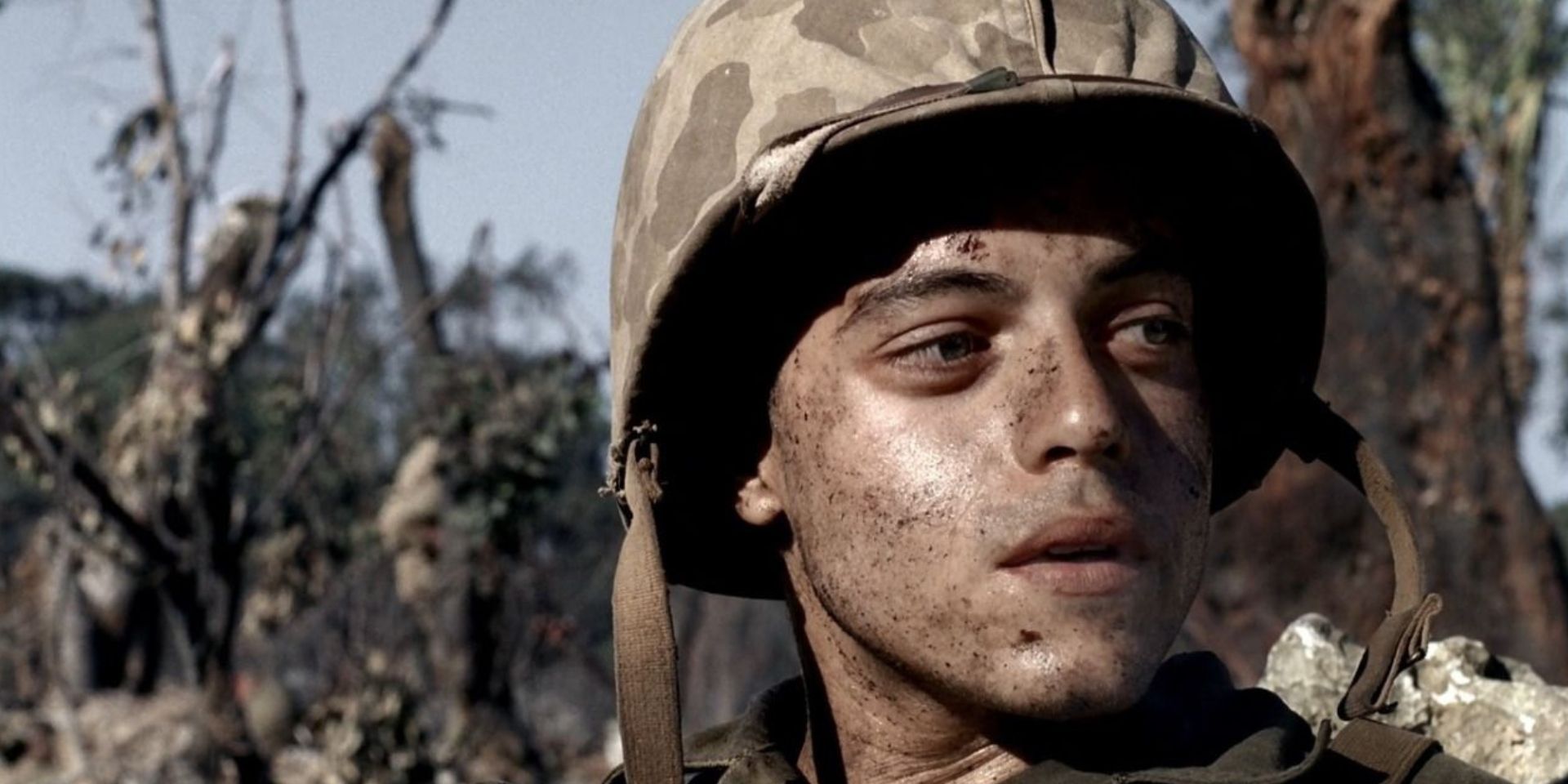The Big Picture
- Band of Brothers was a game-changer in depicting World War II, but The Pacific goes even darker, showcasing the futility and banality of war.
- The Pacific explores the emotional context and backgrounds of its characters before they were thrust into combat, giving a more complete picture of their experiences.
- The Pacific challenges the idea of heroism and questions the morality of war, blurring the line between "good" and "evil" in the context of combat.
It’s evident that Steven Spielberg and Tom Hanks both have a tremendous amount of respect for the American soldiers who served in World War II. After their work together on the Academy Award-winning war film Saving Private Ryan, Spielberg and Hanks worked together to produce the game-changing HBO miniseries Band of Brothers. The ten-episode “event series” had the scope and scale of a Hollywood blockbuster, and featured an astounding accuracy to historical detail. Band of Brothers told a disturbing, yet ultimately inspiring story of the Infantry Regiment known as “Easy Company” during several critical overseas battles in Europe throughout the conflict; while Band of Brothers showed a chapter of American heroism during the war, it wasn’t the full story. Hanks and Spielberg showed an even darker side to the conflict with HBO's The Pacific, a similar historical series that examined the Pacific Theater era of World War II. The Pacific is just as gripping as Band of Brothers, but the episode "Peleliu Hills" proved that the subsequent series was unafraid to recreate the full banality of war.
‘The Pacific’ Is Darker Than ‘Band of Brothers'
On its surface, The Pacific feels fairly similar to Band of Brothers; both shows follow a core group of American soldiers during the full extent of their servitude. However, The Pacific was unique because it featured a more complete totality of these men’s experiences. The first episode, "Guadalcanal/Leckie," explored the lives that many of these characters held before the bombing of Pearl Harbor in 1941. These scenes played an valuable role in establishing the emotional context of the series; it was important to know where characters like PFC Robert Leckie (James Badge Dale), PFC Eugene Sledge (Joseph Mazzello), Sergeant John Basilone (Jon Seda), and PFC Sidney Phillips (Ashton Holmes) came from before they were thrust into the height of combat; additional characters like Rami Malek’s PFC Merriell Shelton were introduced in later episodes once the conflict had already escalated.
Violence was omnipresent in both shows, but The Pacific was keen to explore the futility of warfare; the characters on Band of Brothers, despite their heroism, rarely question their own duty. The enemies that the heroes of The Pacific face aren’t just the Japanese soldiers; they’re faced with drought, starvation, and disease as they venture further into the foreign jungle. The episode "Peleliu Airfield" detailed the Marine’s critical mission to capture a critical airfield during their siege of Japan, which resulted in heavy losses and serious injuries to many of the show’s leads. The wounds they face aren’t just physical, but emotional; when faced with another major land battle, it becomes harder for the Marines to understand the context of why they were there in the first place. Those without purpose risked dipping into their darker impulses, a theme that became even more evident during the Bloody Nose Ridge campaign.
The opening moments of "Peleliu Hills" are among the show’s most striking; Sledge awakens on Peleliu to see a field surrounded by bloodied bodies and shrapnel from the campaign in the previous episode. Up until this point, Sledge had been one of the most likable protagonists in the series. Early episodes had detailed the complexity of his training process, as a heart murmur had nearly rendered him unqualified to serve. It takes a lot of insisting on Sledge’s part to convince his father to let him serve, showing the importance that ethics play in his character arc; although he is not religious, Sledge holds himself to a high moral code. However, he nearly crosses the line of what he’s willing to do in the name of his country during a battle that pushes the Marines to their limits.
This Is the Darkest Moment in ‘The Pacific'
"Peleliu Hills" does a great job of reminding the viewer just how innocent Sledge really is. He’s initially disturbed by Snafu’s jokes that “nobody’s going home,” and appears traumatized when he sees that his old friend “Chuckler” (Josh Helman) has been paralyzed and is lying on a stretcher. A moment where Captain Haldane (Scott Gibson) offers Sledge a cigarette serves as the perfect thematic embodiment of his loss of innocence, as Sledge never used to smoke. The man he was before he enlisted in the Marines is very different from the world-weary corporal that he is now.
“Peleliu Hills" is particularly disturbing compared to previous battles in the series because of the Japanese soldiers’ policy of not surrendering; the Marines need to thoroughly examine the bodies of the enemies that they think they’ve slain in order to confirm that they’re actually dead. While some of the Marines take home gold teeth from the mouths of their enemy combatants, Sledge initially decides to treat the deceased Japanese soldiers with respect. However, a few critical moments change his mind; the hazy chaos of a bunker fight, the use of a flamethrower to incinerate live flesh, the death of Haldane, and the brutality of the Japanese soldiers harden his views on what constitutes “honor.”
The chemistry between Mazzello and Makek, who would go on to star together in Bohemian Rhapsody, is simply remarkable. While initially, it’s Snafu who pushes Sledge to accept the “war is hell” sentiment, it becomes clear that joking about their futility is just Snafu’s way of coping with the misery of the war. When a traumatized, enraged Sledge considers walking off into the deserted trenches to get some “trophies” from the bodies of the Japanese soldiers, it's Snafu who holds him back. Although Snafu warns Sledge not to take any trinkets because of “bad germs,” he’s clearly worried that Sledge has begun to explore his darker impulses. The final sequence of "Peleliu Hills" is equally powerful on a thematic level; as Sledge wades into the water of the Japanese beaches, it's as if he’s been reborn, and cleansed of the sins he’s made during the previous battle.
The Pacific is about more than just heroism. The series questioned whether the “Greatest Generation” was really hiding some darker experience within the war, and Sledge’s actions helped to blur the line between “good” and “evil.” While no less celebratory of the incredible heroism of men like Sledge, The Pacific proved during its most gripping moments that there are no “winners” in a combat that has become this brutal.
The Pacific is currently available to stream on Netflix.



